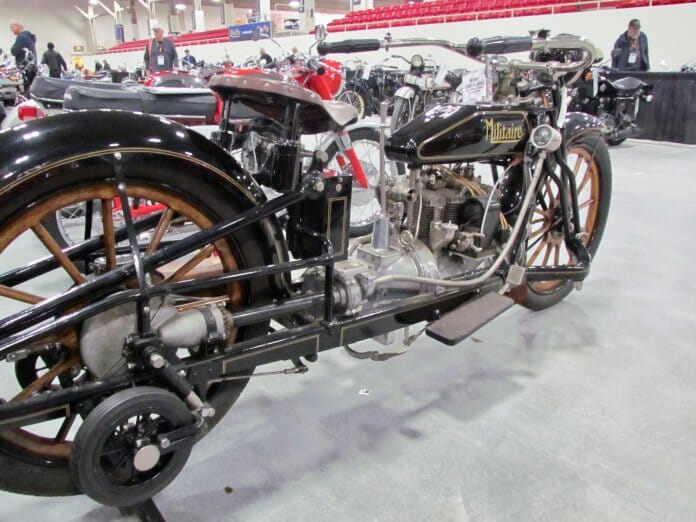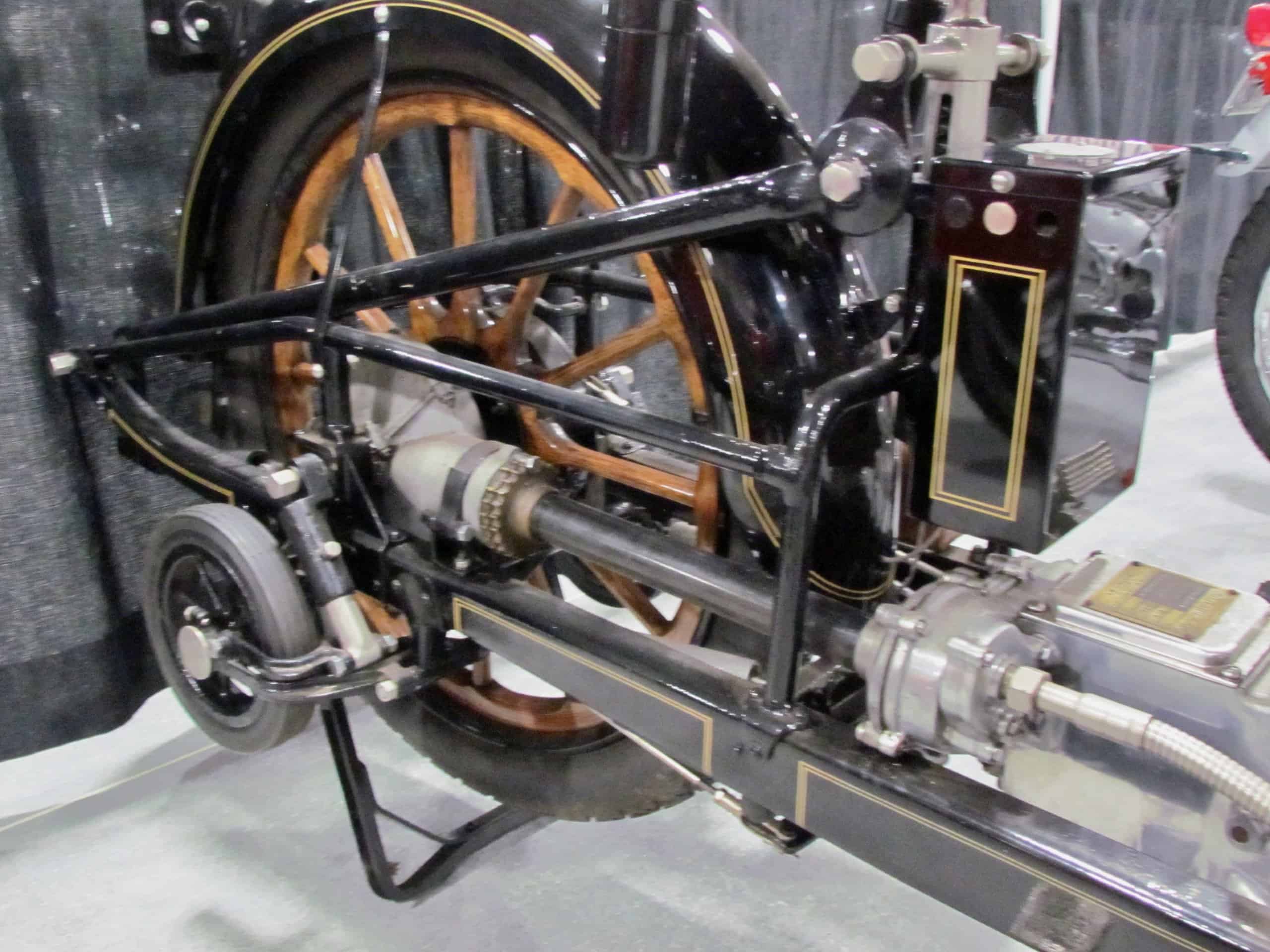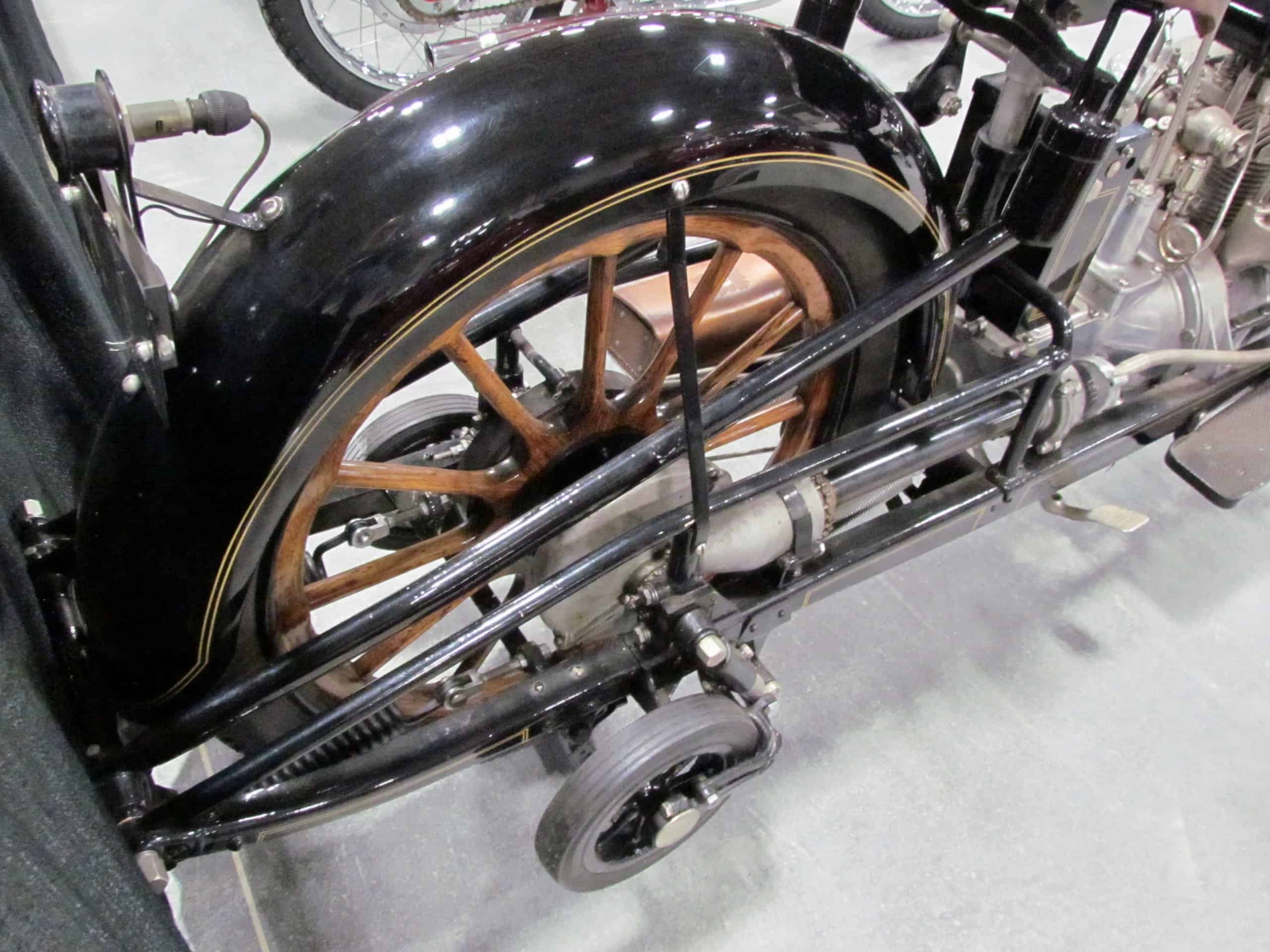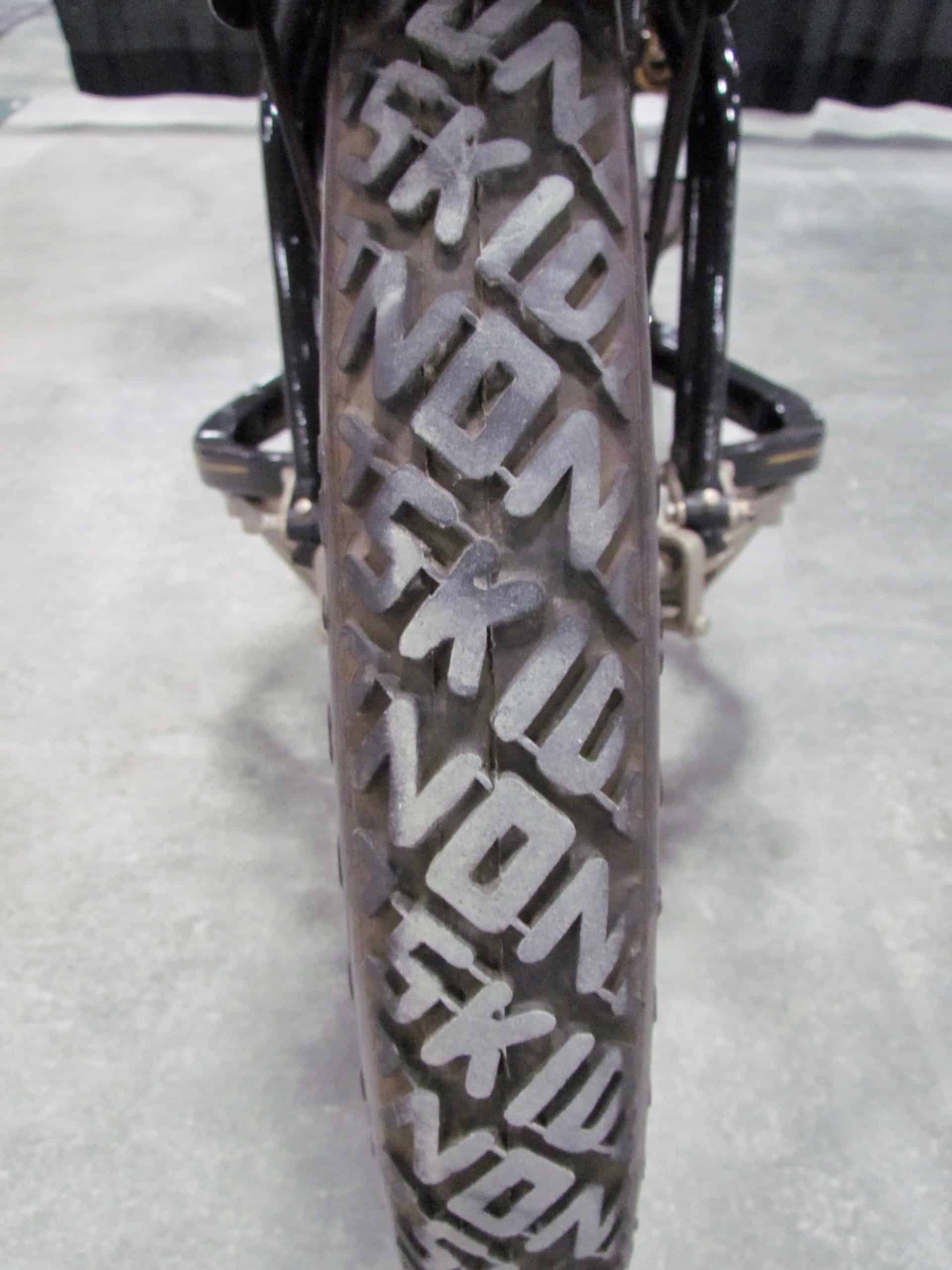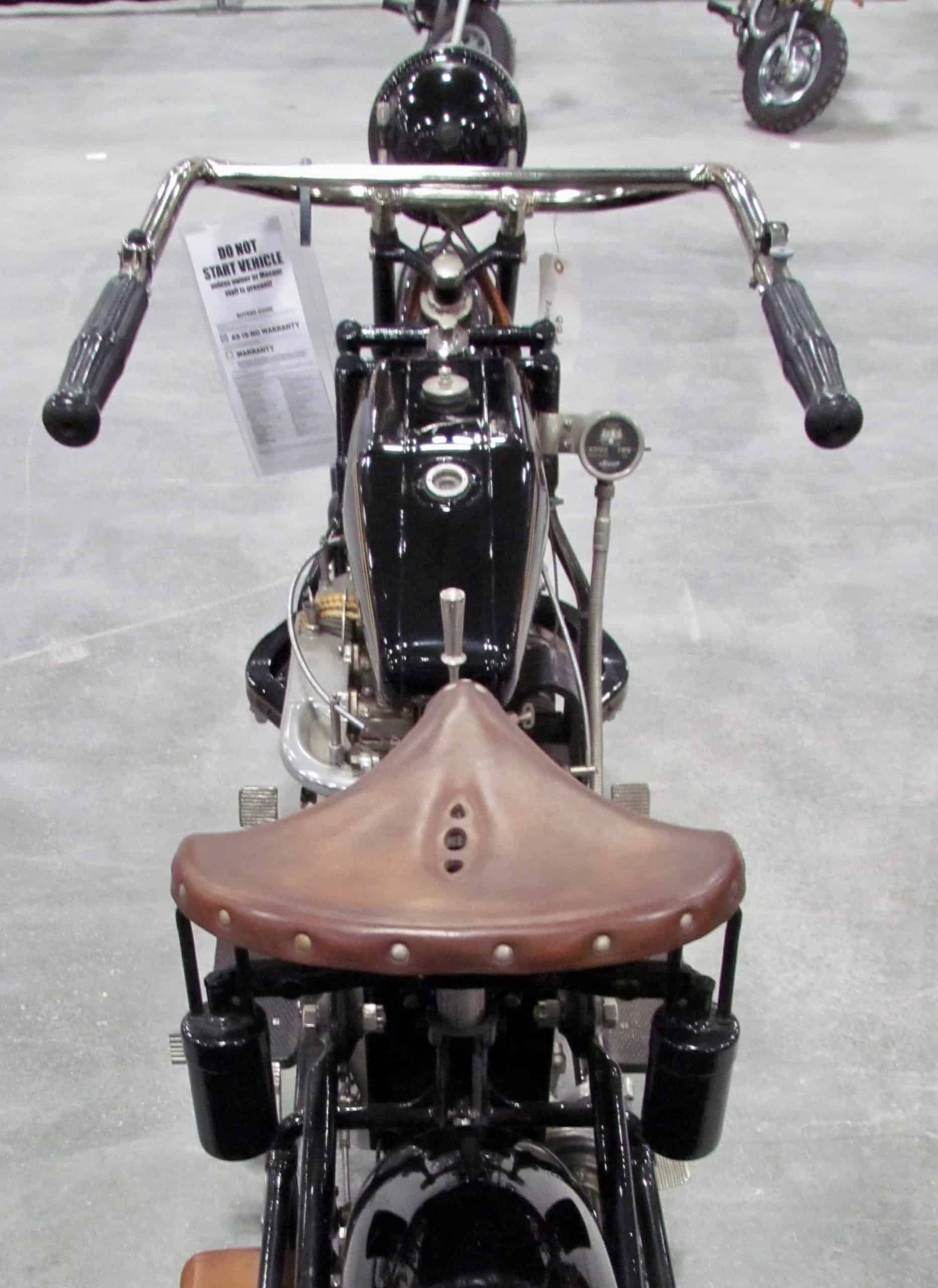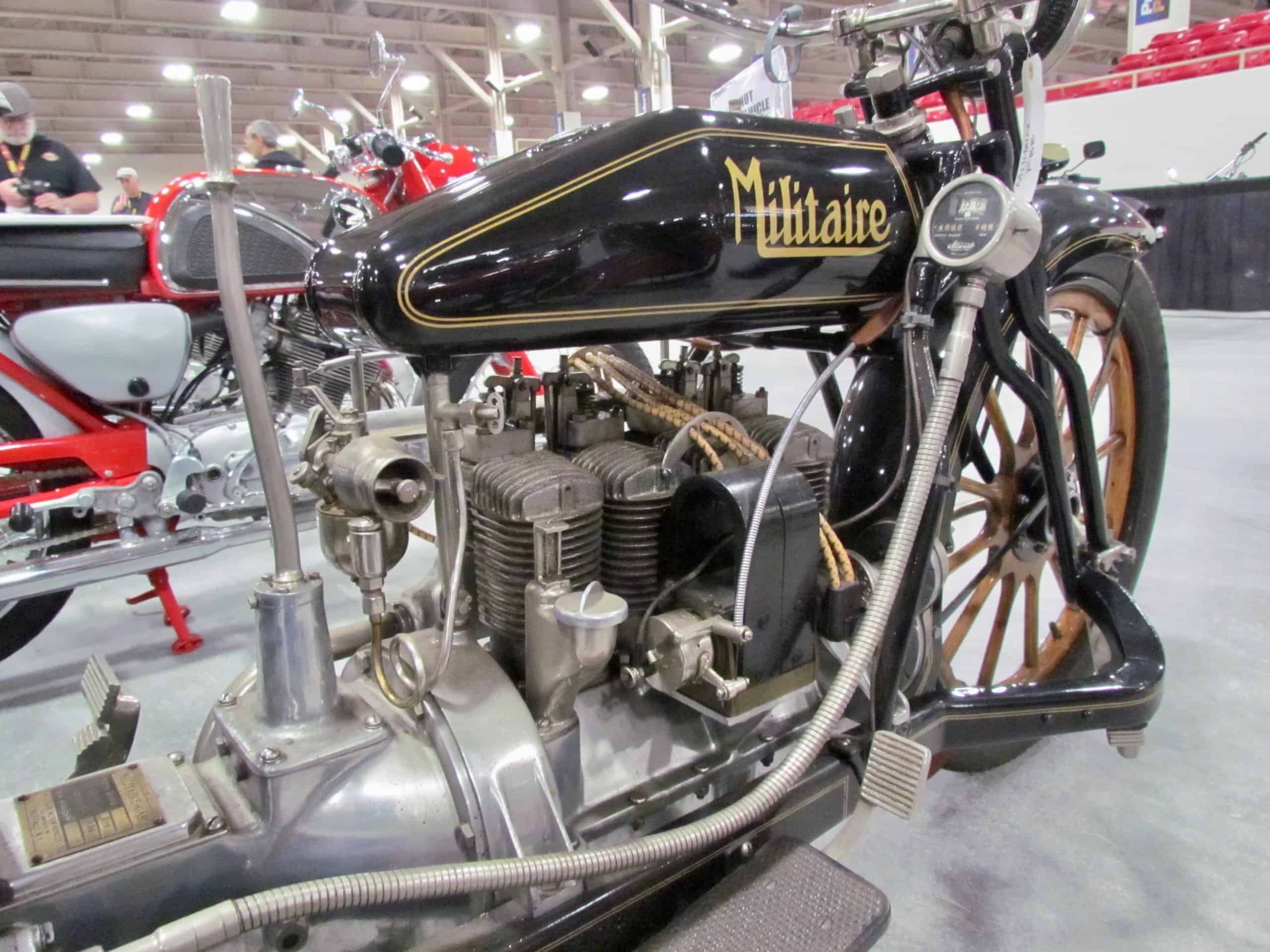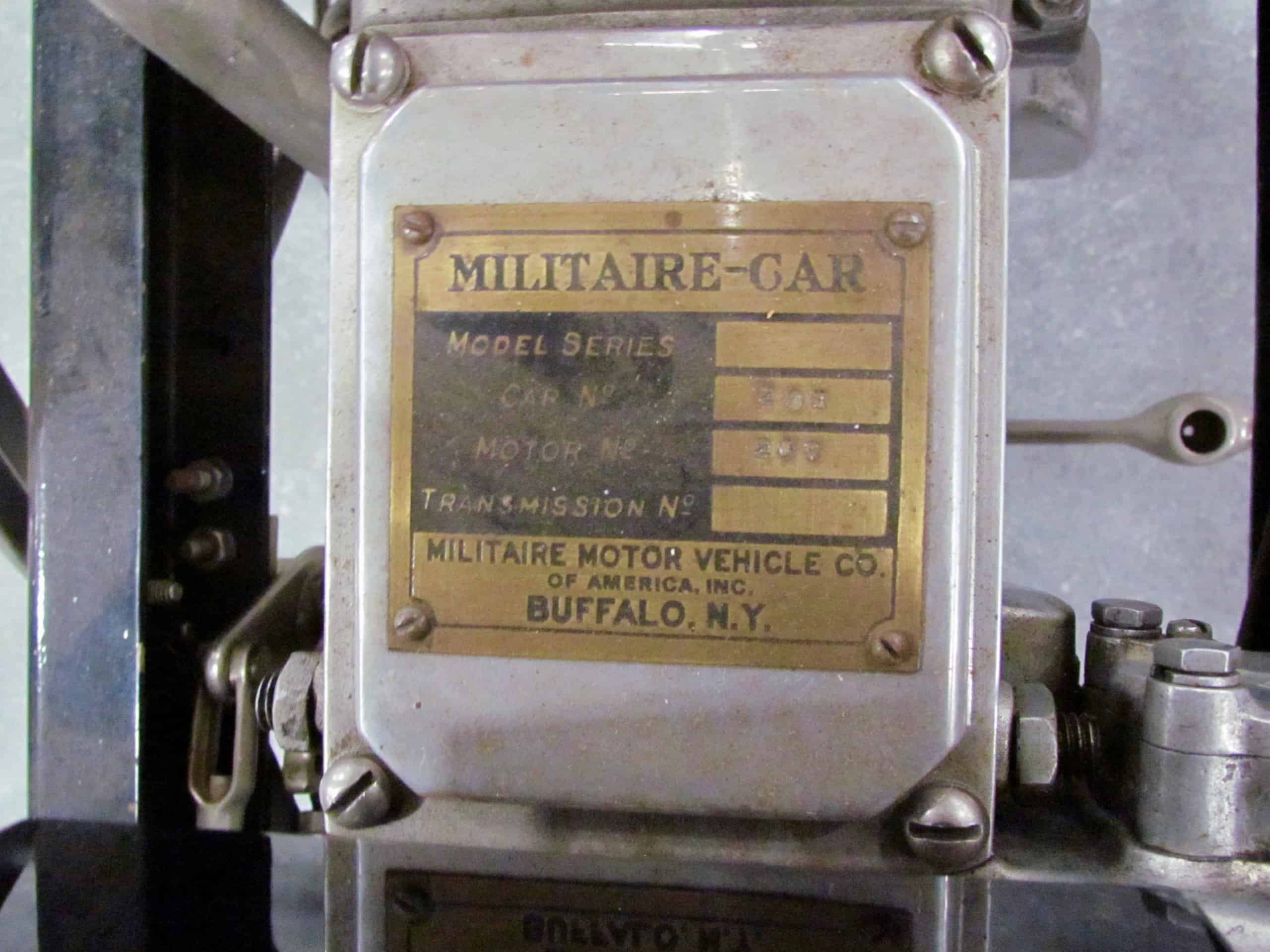When is a motorcycle not a motorcycle but instead a car?
Vintage motorcycle enthusiasts likely would say that the Ner-A-Car came closest. Carl Nearcher’s 2-wheelers were built on a low-slung steel chassis and had center-hub steering and some other car-like details. They were built in England and the U.S. in the 1920s, and there were around 10,000 of them produced.
There also was the earlier Bi-Car; Nearcher’s Ner-A-Car was produced under license from the Detroit Bi-Car Company.
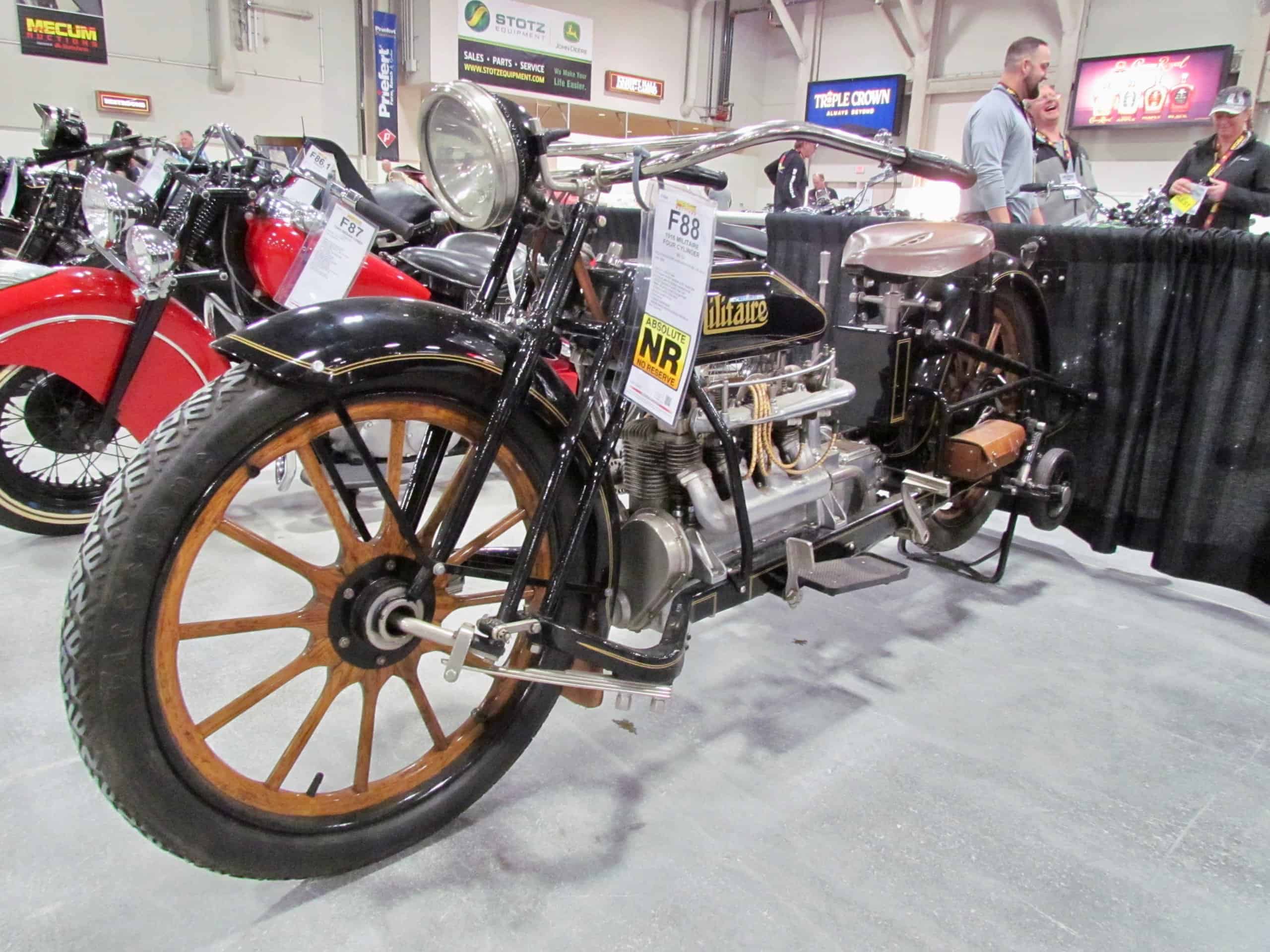
Yet another though lesser known quasi-car was the Militaire Autocycle, an example of which will be crossing the auction block Friday, January 24, at Mecum’s annual collector motorcycle auction in Las Vegas.
Lot F88 at the Mecum Auction is a 1916 Militaire Four Cylinder that Norman Sinclair insisted was a car, not a mere motorcycle. This one has motorcycle handlebars but Sinclair’s first design, in 1910, had a car-style steering wheel.
And technically, the Militaire is a 4-wheel vehicle. Mounted at the rear are what might look like bicycle training wheels. To make it easier to ride, or to drive as Sinclair might put it, a lever lowered the small wheels to balance the car when it was not in motion. It also had a 1,144cc 4-cylinder engine and the engine’s crankcase was a stressed part of the chassis.


The Militaire has several car-like features, including its frame rails, suspension, steering geometry, even its third and fourth wheels so it can stand on its own.
Sinclair must have been a remarkable fellow, and an amazing salesman. Five times he went through bankruptcy, but each time he was able to convince new investors of the potential for his car disguised as a motorcycle.
He reportedly acquired the rights to the design when another company went bankrupt. He set up his business in Buffalo, New York, (also doing production in Indianapolis and Cleveland) and at various times it was known as Molitor and at others at Militaire. The later name may relate to the sale of his machines to the U.S. military for use in World War I, and to his use of wooden military-style wheels.
While perhaps easier to ride, the Militaire Autocycle also was longer and heavier and thus more difficult to maneuver and much more likely to become bogged down on the muddy roads of that era.
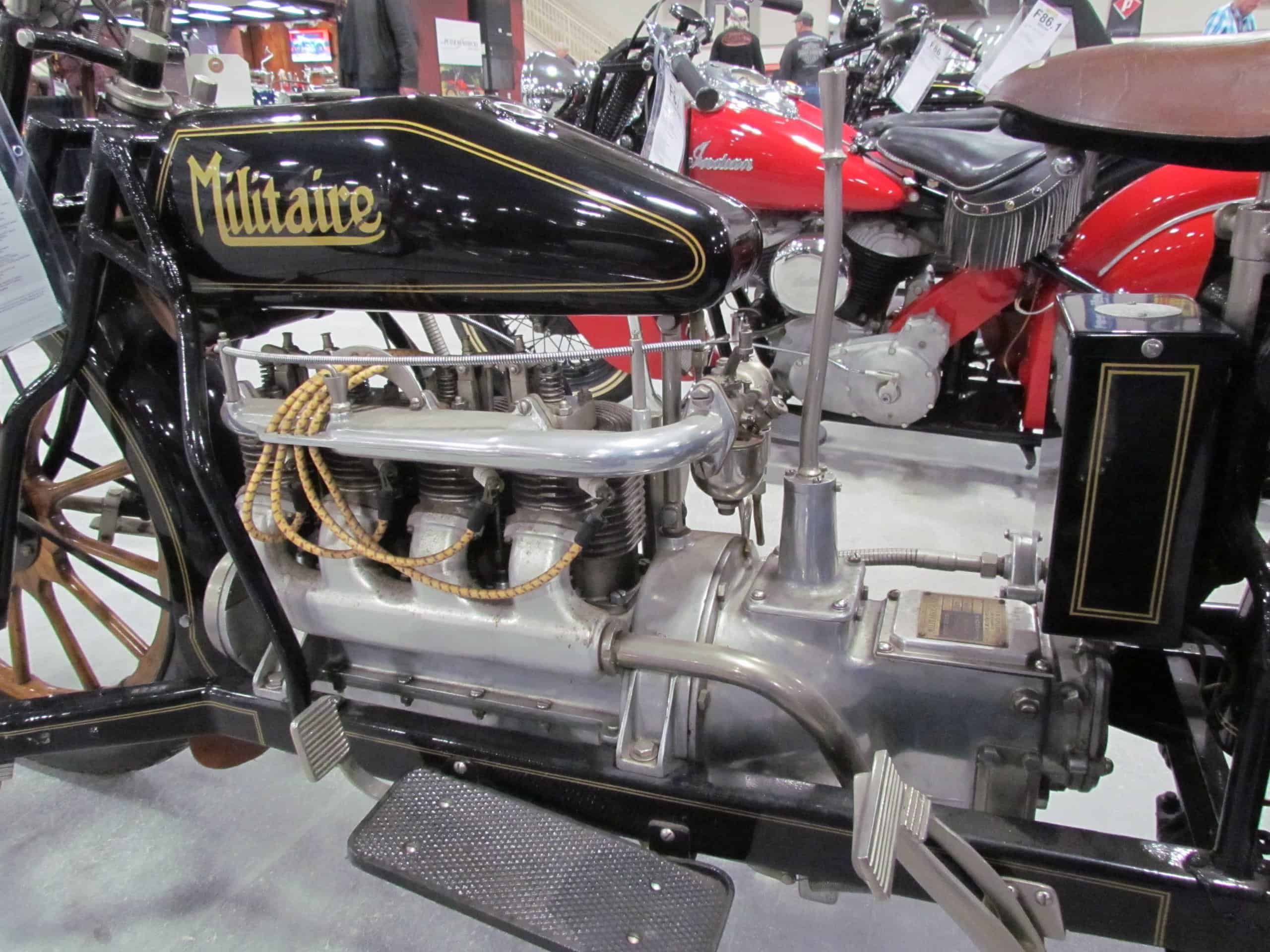
“It’s sort of a motorcycle that was more driver friendly,” said Greg Arnold, Mecum’s motorcycle auction manager and a collector since he was a pre-teen (he bought his first motorcycle when he was 11 years old).
The concept might have been more successful, Arnold noted, but for the fact that Henry Ford kept lowering the price of his Model T, a true motorcar, to the point that you could buy a Ford for less money than you had to pay for a Militaire faux car.
The 1916 Militaire going across the block at Mecum is a three-owner example that has been restored and took honors at the Half Moon Bay Concours in California.



